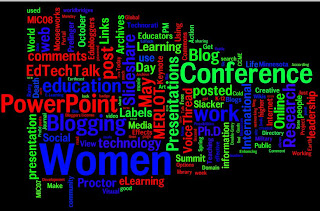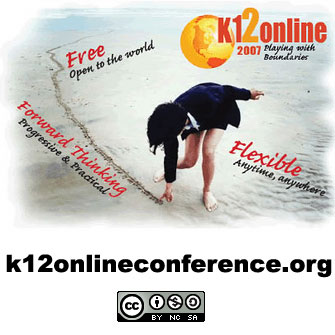 This is an interesting way to pose research questions and to gather answers. In a blog post in elearnspace Siemens wrote, "I often hear educators talking about “education needs to change” and then he asked people to respond to some questions. I admire George's writing and had the privilege of hearing him speak at the ODCE 2007 . So, I decided to respond to his request and provide my answers to his questions.
This is an interesting way to pose research questions and to gather answers. In a blog post in elearnspace Siemens wrote, "I often hear educators talking about “education needs to change” and then he asked people to respond to some questions. I admire George's writing and had the privilege of hearing him speak at the ODCE 2007 . So, I decided to respond to his request and provide my answers to his questions.1. Does education need to change?
Yes, education needs to change and improve.
2. Why or why not?
Education should not change for changes sake, but should take a look at its history, practice, and all of the educational research that is catalogued and make needed changes. Education is research based, but does not seem to reflect on and use information to improve its monolithic self.
3. If it should change, what should it become? How should education (k-12, higher, or corporate) look like in the future?
Improvement, rather than just change, would mean that education (all) would take on a serious look at practices, policies, and methods and begin the hard work of reinventing itself. Much of what we do in education is based on what has been done in the past and does not appear to be connected to the here and now or to looking at the future.
Are there other Toffler fans out there? In a recent Edutopia article he said, "Shut it down." The idea of starting over is frightening in terms of human capital and the amount of time and money it would take to rebuild, but the fundamentals proposed in Toffler's
Here they are copy and paste from Edutopia.org and
Toffler's vision for education in the twenty-first century:
- Open twenty-four hours a day
- Customized educational experience
- Kids arrive at different times
- Students begin their formalized schooling at different ages
- Curriculum is integrated across disciplines
- Nonteachers work with teachers
- Teachers alternate working in schools and in business world
- Local businesses have offices in the schools
- Increased number of charter schools
P.S. Edutopia posted a poll asking readers whether education would be better off in four years.









